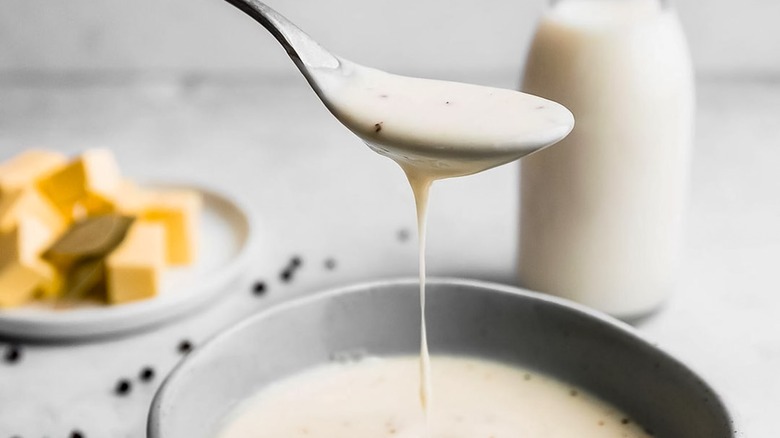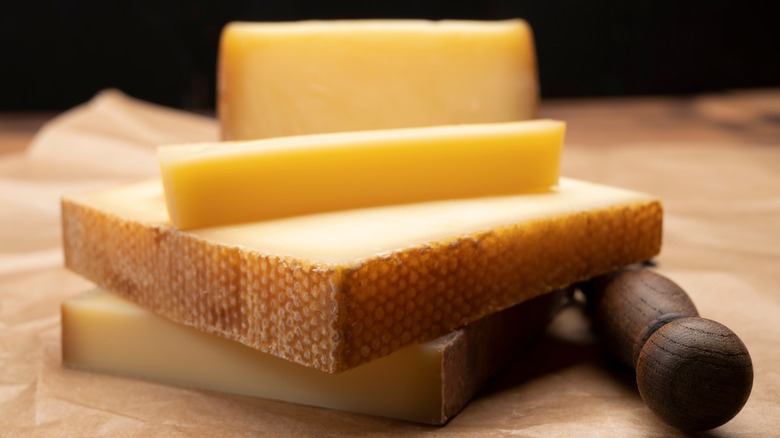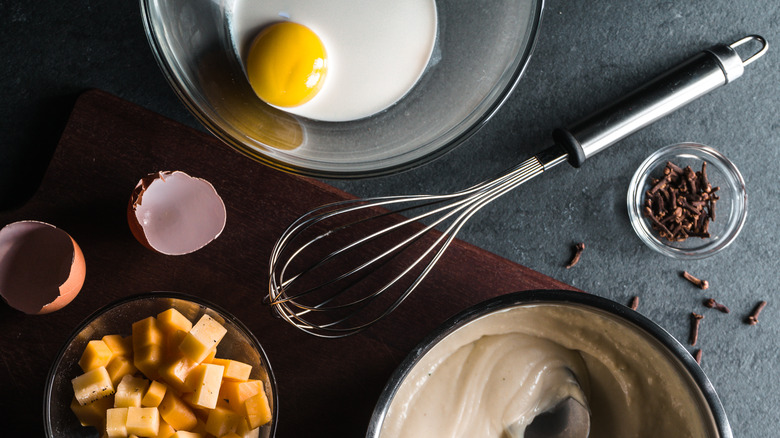Mornay Sauce Is A Simple, Classic French Sauce Every Cook Should Know
Béchamel is one of the foundational five "mother sauces" that form the basis of classical French cooking. A white sauce, béchamel is traditionally made by thickening warmed milk with a combination of butter and flour called a roux. Because of that, béchamel is the basis for many cream- and cheese-based white sauces, probably the most familiar to American palates being Mornay — a classic cheese sauce that will serve you well.
Mornay sauce is béchamel enriched with cheese — traditionally gruyère, sometimes with the addition of Parmesan. It was first introduced almost 200 years ago in Le Grand Véfour, one of Paris' first great restaurants, but you might recognize it as the basis of a really good macaroni and cheese.
Beyond that, Mornay is a welcome addition to many dishes and therefore one you should master. It's versatile enough to make a marvelous substitute for hollandaise on Eggs Benedict (resulting in Eggs Mornay, naturally) and works equally well with pasta, steamed vegetables, chicken, and fish. Luckily, it's a cinch to make.
How to make Mornay
The first step in creating a Mornay sauce is making béchamel: Combine roughly equal parts clarified or regular butter and flour in a saucepan. If using clarified butter, add a little less because of its lower water content. Stir over medium heat for a few minutes until the water in the butter and the raw taste of the flour cook off. Slowly whisk in hot milk until incorporated. A good ratio for this mixture is 1½ tablespoons each of butter and flour for every cup of milk. Add a pinch of salt and black pepper to taste.
At this point you can customize your Mornay. Some people like to whisk in an egg yolk and a sprinkling of nutmeg to give it a velvety texture. Others add an onion pique — a peeled onion studded with cloves and a bay leaf. Regardless, turn off the heat and stir in grated cheese like nutty gruyère and perhaps a good parmesan.
Many semi-firm cheeses like cheddar will also work, allowing this versatile sauce to be tailored to your desired dish. Taste for seasoning, whisking in more milk if you'd like a thinner sauce. Mornay can be used immediately or covered and stored in the refrigerator for several days or frozen up to three months.
Mornay's many uses
Mornay sauce is highly flexible and goes with any dish that calls for heavy cream or hollandaise. Beyond being the foundation of Eggs Mornay, the sauce gives a velvety finish to Croque monsieur or Croque madame. It's the ideal base for a luscious macaroni and cheese or casseroles that could use some cheesy structure, such as a ham and cheese strata or sweet potato casserole with bacon.
Mornay can be substituted for heavy cream in any greens recipe that calls for it, especially those cooked in the Florentine style. You can use Mornay to top a duxelles mushroom burger, roasted cauliflower, or any cheesy gratin. Try it on nachos and scrambled eggs, or spoon it over poached chicken and fried fish.
Depending on your application, you can substitute brie or cheddar for gruyère and parmesan, altering the sauce's creaminess and flavor profile to fit your particular culinary need, be it Cajun stuffed crab shells or Vermont cheddar soup. Whatever the dish, Mornay makes it more voluptuous.


